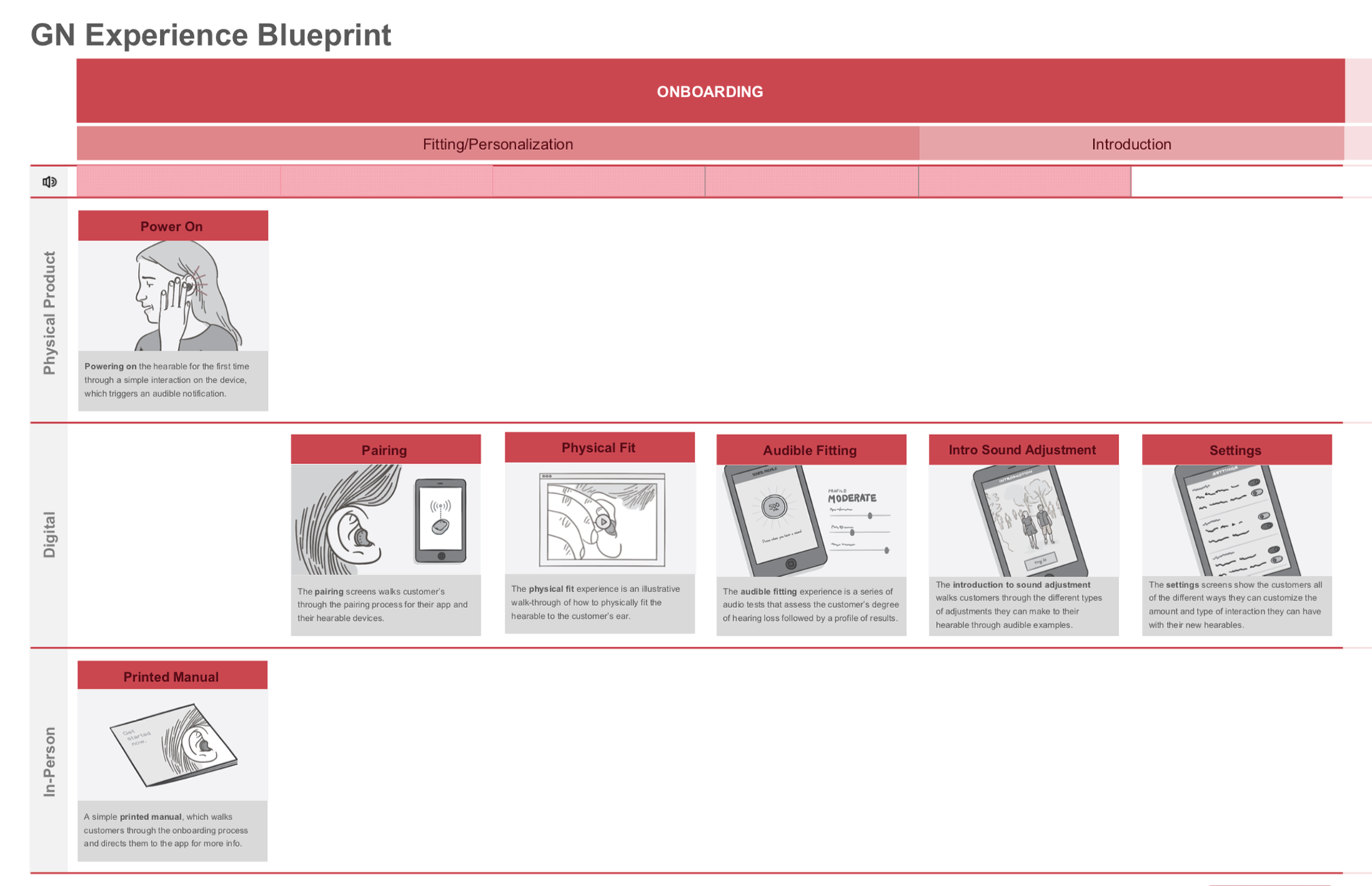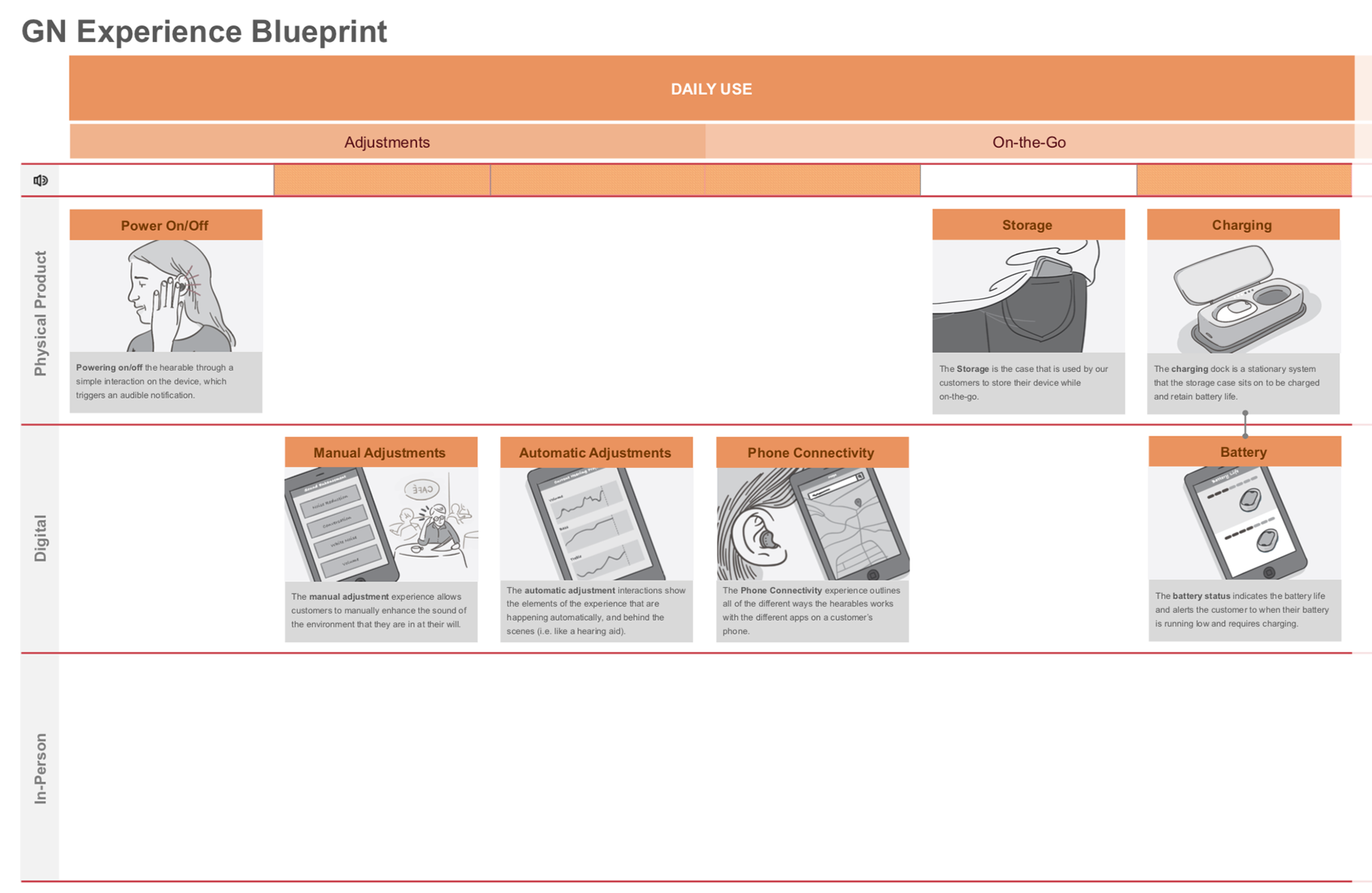Current stated customer journey map
We printed persona card booklets to be distributed to the clients during the workshop. First two pages shown only.
Sample wireframes
Sample wireframes
This is a "birds eye view" of the experience blueprint. An experience blueprint is an operational tool that visually describes the key interactions and touchpoints along the ideal experience. It provide a simple and clear high-level overview of each interaction, so as to tell the story from the very beginning to the very end.


For each element in the blueprint, we expanded the interaction to include a deeper description of this experience, including customer quotes from our research that support this idea, key functions that it would have, and experience principle that underlies it.